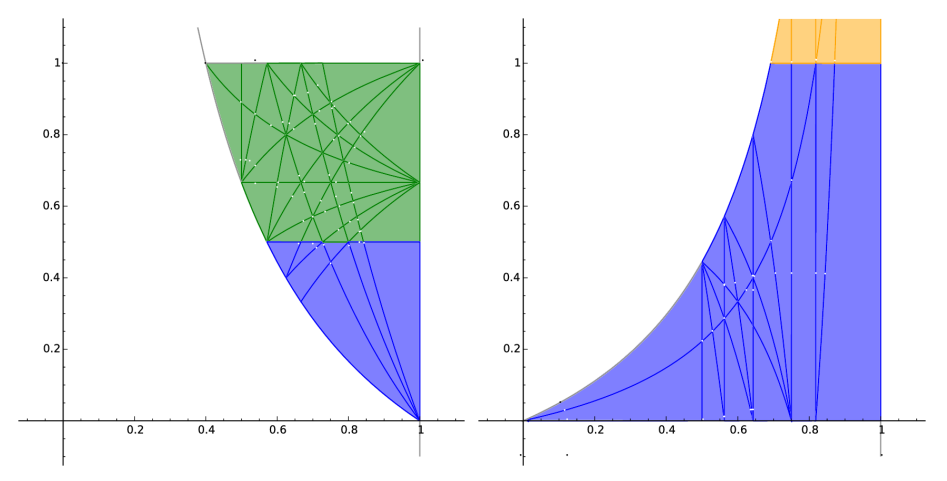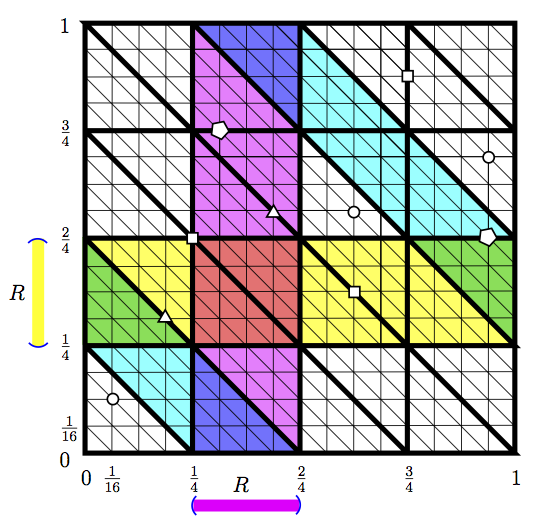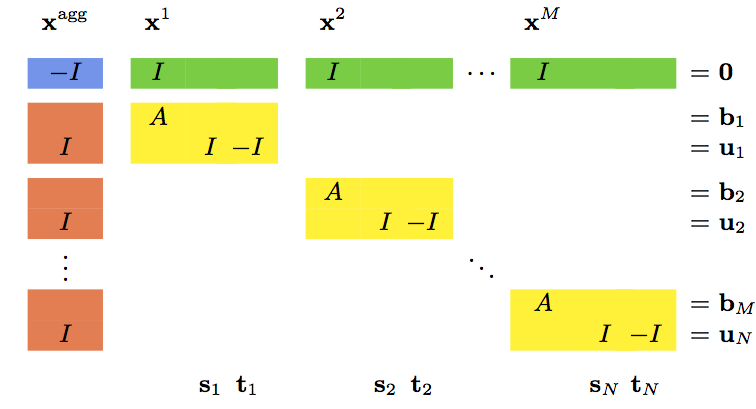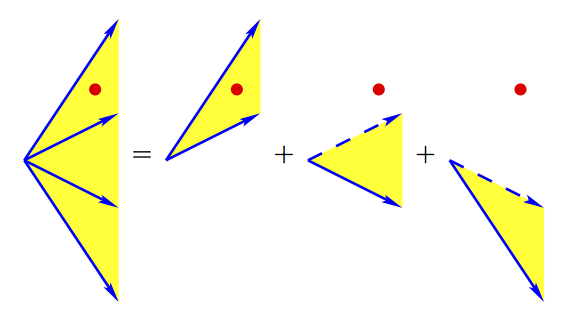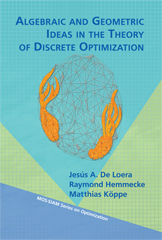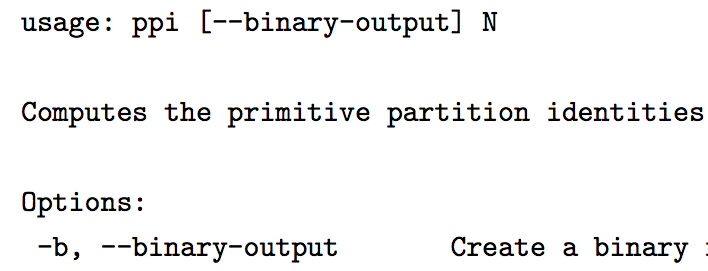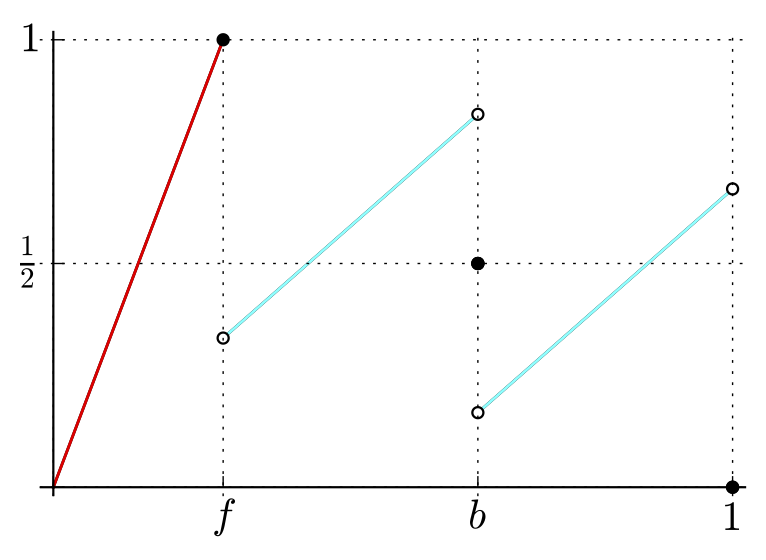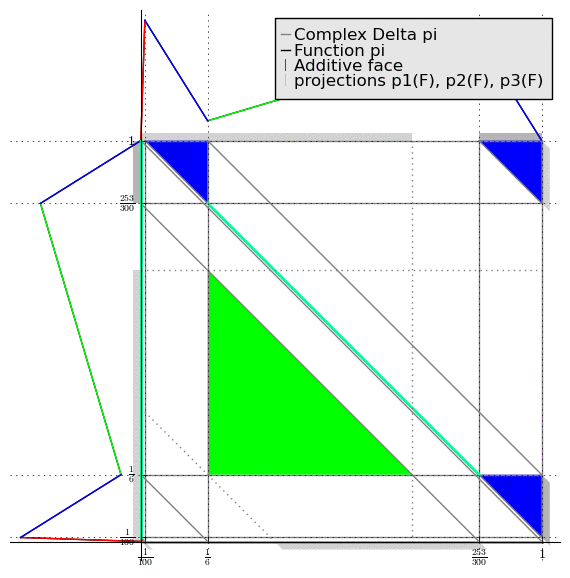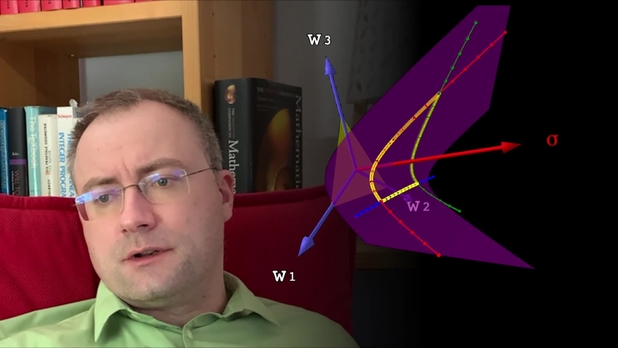
Research
My work is in mathematical optimization (integer programming), computational discrete mathematics, and mathematical software.
Selected funded projects
- High-performance computations with rational generating functions (NSF, Computational Mathematics program, 2009–2013)
- Infinite-dimensional relaxations of mixed-integer optimization problems (NSF, Computational Mathematics program, 2013–2017)
- Collaborative Research: Next-Generation Cutting Planes: Compression, Automation, Diversity, and Computer-Assisted Mathematics (NSF, Computational Mathematics program, 2020–2025)
Alumni of the workgroup
- Amitabh Basu (Krener Assist. Prof. 2010–2013; faculty at Johns Hopkins University, Dept. of Applied Mathematics and Statistics, 2013–)
- Robert Hildebrand (Ph.D. 2013; postdoc at ETH Zürich 2013–2015; Goldstine Fellow at IBM Research 2015–2017; Simons Institute Fellow 2017; tenure-track faculty at Virginia Tech, 2018–)
- Brandon Dutra (Ph.D. 2016, co-advised with J. De Loera; software engineer at Google, 2016–)
- Yuan Zhou (Ph.D. 2017; tenure-track faculty at U. Kentucky, Mathematics 2017–)
- Jiawei Wang (Ph.D. 2020; data scientist at Uber, 2020–)
- Chun Yu (Johnny) Hong (undergraduate researcher 2013; Ph.D. 2020, UC Berkeley, Statistics; data scientist at Google, 2020–)
- Peijun Xiao (undergraduate researcher 2015–2017)
- Yao Shuidie (undergraduate researcher 2016–2017)
Other collaborators at UC Davis
Publications
... on multi-row cuts, cut-generating functions, Gomory–Johnson's infinite group relaxation:- The triangle closure is a polyhedron (with A. Basu, R. Hildebrand, 2011)
- A (k+1)-slope theorem for the k-dimensional infinite group relaxation (with A. Basu, R. Hildebrand, M. Molinaro, 2011)
- Equivariant perturbation in Gomory and Johnson's infinite group problem. Part I, Part II, Part III (with A. Basu, R. Hildebrand, 2012–2014); Part IV (with R. Hildebrand, L. Xu, 2025); Part V (with C. Y. Hong and Y. Zhou, 2016); Part VI (with Y. Zhou, 2016); Part VII (with R. Hildebrand, Y. Zhou, 2018)
- Light on the infinite group relaxation (survey, with A. Basu and R. Hildebrand, 2014)
- An electronic compendium of extreme functions for the Gomory–Johnson infinite group problem (with Y. Zhou, 2014)
- New computer-based search strategies for extreme functions of the Gomory–Johnson infinite group problem (with Y. Zhou, 2015)
... on primal integer programming:
- A primal all-integer algorithm based on irreducible solutions (the paper on the Integral Basis Method; with U.-U. Haus and R. Weismantel, 2001).
- Graver basis and proximity techniques for block-structured separable convex integer minimization problems (with R. Hemmecke, R. Weismantel, 2012)
- Graver basis methods for two-stage stochastic integer programs and other block structures (Oberwolfach abstract, 3 pages, 2018)
... on mixed-integer nonlinear optimization:
- FPTAS for optimizing polynomials over the mixed-integer points of polytopes in fixed dimension (with J. A. De Loera, R. Hemmecke, and R. Weismantel, 2007)
- Nonlinear integer programming (survey, with R. Hemmecke, J. Lee, R. Weismantel, 2009)
- A new Lenstra-type algorithm for quasiconvex polynomial integer minimization with complexity 2^O(n log n) (with R. Hildebrand, 2010)
- On the complexity of nonlinear mixed-integer optimization (survey, 2010)
... on game theory and bilevel optimization:
- Rational generating functions and integer programming games (with C. T. Ryan and M. Queyranne, 2008)
- A parametric integer programming algorithm for bilevel mixed integer programs (with M. Queyranne, C. T. Ryan, 2009)
- A primal Barvinok algorithm based on irrational decompositions (2006)
- Computing parametric rational generating functions with a primal Barvinok algorithm (with S. Verdoolaege, 2008)
- An implementation of the Barvinok-Woods integer projection algorithm (with S. Verdoolaege, K. M. Woods, 2008)
- How to integrate a polynomial over a simplex (with V. Baldoni, N. Berline, J. A. De Loera, M. Vergne, 2008)
- Intermediate sums on polyhedra: Computation and real Ehrhart theory (with V. Baldoni, N. Berline, M. Vergne, 2010)
- Three Ehrhart quasi-polynomials (with V. Baldoni, N. Berline, J. A. De Loera, M. Vergne, 2014)
... on enumerative combinatorics and number theory:
- Ehrhart polynomials of matroid polytopes and polymatroids (with J. A. De Loera and D. C. Haws, 2007)
- s-lecture hall partitions, self-reciprocal polynomials, and Gorenstein cones (with M. Beck, B. Braun, C. Savage, Z. Zafeirakopoulos, 2012)
- Coefficients of Sylvester's denumerant (with V. Baldoni, N. Berline, J. A. De Loera, M. Vergne, 2013)
- Generating functions and triangulations for lecture hall cones (with M. Beck, B. Braun, C. Savage, Z. Zafeirakopoulos, 2015)
... a textbook and research monograph:
- Algebraic and Geometric Ideas in the Theory of Discrete Optimization (2012, xx + 313 pages, with Jesús A. De Loera and Raymond Hemmecke; cover art by Astrid Köppe)
A gentle introduction and state-of-the-art reference to Graver bases, effective generating function methods, Gröbner basis methods, and Nullstellensatz and Positivstellensatz relaxations.
... more... (see also my Google Scholar profile and arXiv)
Mathematical Software and Data
- GYWOPT, an interactive system for exploring primal reformulations of integer linear programs, containing an implementation of the Integral Basis Method (with U.-U. Haus, 2000–2005)
- LattE integrale,
the successor to LattE and LattE macchiato (with V. Baldoni,
N. Berline,
J. De Loera, B. Dutra, M. Vergne and several
contributing students, 2006–)
This software counts lattice points in rational polyhedra using state-of-the-art variants of Barvinok's algorithm, computes Ehrhart polynomials, volumes of polytopes and integrals of polynomial functions over polytopes, and computes the highest coefficients of weighted Ehrhart quasi-polynomials.
- 4ti2, a software package for
algebraic, geometric and combinatorial problems on linear spaces
(with R. Hemmecke, R. Hemmecke, P. Malkin,
M. Walter, 2008–)
This software implements state-of-the-art algorithms for the computation of Graver bases, Hilbert bases, extreme rays of cones, toric Gröbner bases, Markov bases, and more.
-
cutgeneratingfunctionology:
SageMath
program for computation and experimentation with the
1-row Gomory–Johnson infinite group problem and beyond (with
C. Y. Hong, Y. Zhou, J. Wang, 2013–)
This software implements an automated extremality test for piecewise linear functions (which are allowed to be discontinuous) and contains an electronic compendium of extreme functions.
- Since 2015, I have
made various
contributions
to SageMath, an open source mathematical system based on Python, originally written by W. Stein in 2005 and developed by a large community of developers.
In terms of authored commits, I am the #1 contributor of all time.
- Since October 2024 I develop the pip-installable modularized fork of SageMath called passagemath: General purpose mathematical software system in Python.
- more... (see also GitHub @mkoeppe)
Teaching
- Math 180: Computer Proofs (Video lectures from Winter 2022: Open Educational Resources, CC BY-SA 3.0). This upper-division course introduces logic modeling with Z3, quantifier elimination in theories of linear systems over reals and integers, and sum-of-squares techniques.
- Math 258B: Discrete Optimization (Video lectures from Fall 2021: Open Educational Resources, CC BY-SA 3.0). This Ph.D.-level course starts with a review of linear programming and polyhedral geometry and develops several classic and modern techniques of integer and mixed-integer linear programming.
- Math 168: Optimization (Video lectures from Fall 2020: Open Educational Resources, CC BY-SA 3.0). This upper-division course in optimization follows the approach of the textbook by Robert J. Vanderbei, Linear programming, foundations and extensions regarding LP theory and the notation for the simplex method. It is complemented by an introduction to integer programming modeling techniques.
- Math 133: Mathematical Finance (Video lectures from Spring 2021: Open Educational Resources, CC BY-SA 3.0). The course follows the textbook by Capiński and Zastawniak, Mathematics for Finance, An Introduction to Financial Engineering. The approach of the textbook is complemented by a review of probability and stochastic processes from a measure-theoretic viewpoint; and by computational explorations using the AMPL system.
- Lectures from the 2010 MSRI summer school "Algebraic, Geometric, and Combinatorial Methods for Optimization") on tools from the geometry of numbers, with a focus on rational generating function techniques for integer programming. So in these lectures I introduce lattices, the LLL algorithm, Lenstra's algorithm for integer programming in fixed dimension, Barvinok's theory of short rational generating functions, and the summation method for polynomial integer programming: Lectures 1, 2, 3, 4, 5, 6 and 7
- Other graduate courses:
- Math 258A: Numerical Optimization (most recently in Fall 2013)
- Math 280: Topics in Modern Convex and Mixed-Integer Optimization (Spring 2014)
- Math 280: Global and Mixed-Integer Nonlinear Optimization (Winter 2011)
- Other upper-division undergraduate courses:
- Math 145: Combinatorics (most recently in Winter 2019)
- Math 148: Discrete Mathematics (Combinatorial Optimization) (Winter 2011)
- Math 160: Mathematics for Data Analytics and Decision Making (Spring 2017)
- Math 165: Mathematics and Computers (most recently in Fall 2016)
- Math 180: Mathematics for Decision Making: An Introduction (Winter 2009)
- New undergraduate major at UC Davis (since 2014/15): B.S. in Mathematical Analytics and Operations Research.
- more...
Etc.
CV information can be found here.
- Editorial boards: Mathematical Programming, Series A (2011–2021); Asia-Pacific Journal of Operational Research (2011–); SN Operations Research Forum (2019–); Mathematics (MDPI) (2020–)
- Memberships: current: Deutsche Mathematiker-Vereinigung (DMV), Gesellschaft für Operations Research (GOR); past: Institute for Operations Research and the Management Sciences (INFORMS), American Mathematical Society (AMS), Mathematical Optimization Society (MOS)
- Mathematics Jobs Wiki
- (Non-math) computer programming etc.
- Ich habe versucht zusammenzutragen, woher ihr mich sonst noch kennen könntet. (in German)
Contact
- By email only:
- Business address, office and phone number:
University of California, Davis Department of Mathematics One Shields Avenue Davis, CA 95616 USA
Office: none Phone: none - Office hours for my current classes: See department page
- If you want to set up an appointment with me, you might find my Availability Calendar useful.
